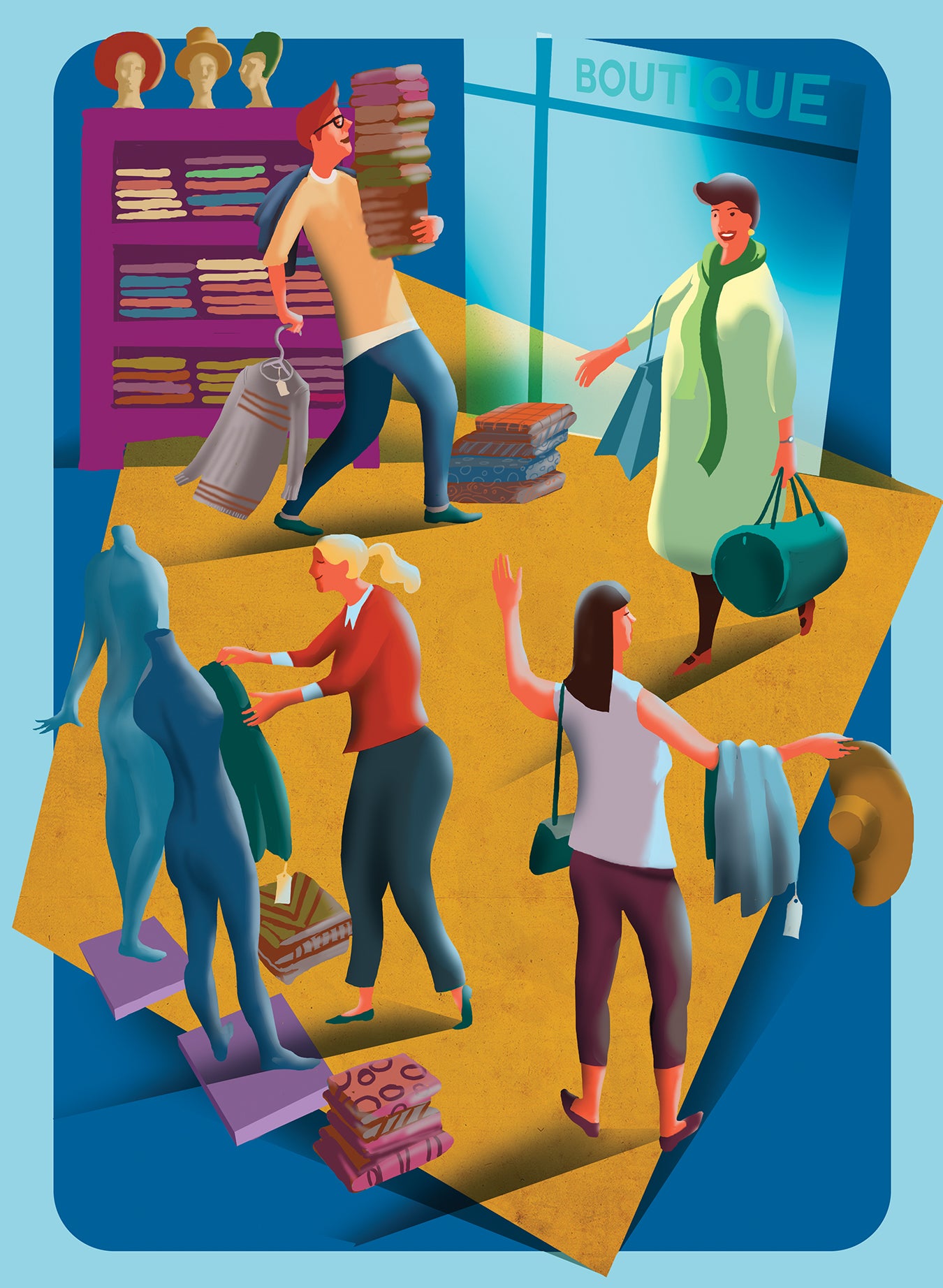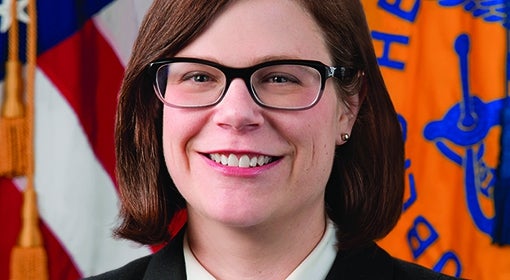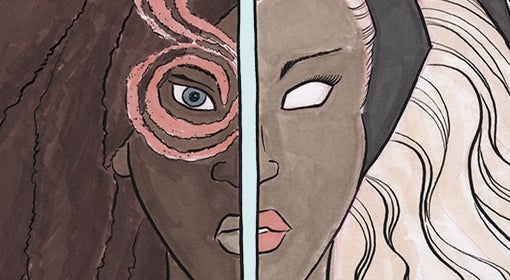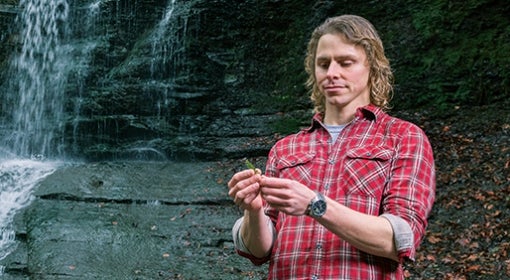 Mannequins in thrifted ensembles stand in the front window, grabbing the attention of passersby. Racks and racks of clothing fill up the room. A customer walks through the door carrying a stuffed bag.
Mannequins in thrifted ensembles stand in the front window, grabbing the attention of passersby. Racks and racks of clothing fill up the room. A customer walks through the door carrying a stuffed bag.
“Donations?” Maura Kay asks as the woman hands over the bag. Kay, a junior studying political science and urban studies, dumps the bag’s contents onto a table. Those who donate clothes receive in-store credit, so Kay invites the customer to start looking around. Meanwhile, the Pitt junior sorts through the just-donated clothes.
Two years ago, this room in the O’Hara Student Center was a conference room. The transformation into a store began with an idea generated by a group project in a class called Sustainability. After the class ended, two environmental studies students from the group, Anna Greenberg and Paul Heffernan, launched the project. With the help of PittServes, the dean of students, and others, they got their storefront in O’Hara and hired coordinators. On March 18, 2015, the University of Thriftsburgh opened.
“We want a place that will divert waste from the waste stream and give students somewhere to bring stuff that they might otherwise throw away,” Greenberg says, explaining that the motivations isn’t profit, but the environment.
People come to Thriftsburgh looking for everything from clothes to wear for job interviews to pieces to add to their Halloween costumes. Kay says that she especially loves helping people find coats and sweaters that will keep them warm during the Pittsburgh winter, which many international or out-or-state students aren’t accustomed to.
“As much as we love our weirdness and our quirkiness, the best moments are when we realize we’re actually serving a need,” says Kay, who puts the donated clothes on hangers, attaching colored pricing tags. The least expensive items are jewelry, which cost a dollar each, and the most expensive are the yellow-tagged clothing items at $10.
Recycling isn’t the only mission. The Thriftsburgh board, including Greenberg and Kay, decided that the store should have social and economic benefits to the Pitt community, as well. They keep the clothes affordable and support other sustainability efforts by donated their proceeds to the Pitt Green Fund, a student group that allocates grants to sustainability projects on campus.
The success of the store hasn’t stopped them from thinking about ways to improve. Both Greenberg and Kay mention that they’d like to be able to take donations of furniture and appliances to sell.
“I’d love to see the store expand beyond clothing to completely negate any end of semester waste. I’d love to see it become a one-stop shop source for that,” Kay says.
The customer comes back to the register after finding the pair of jeans she came looking for. As she leaves the store, Kay puts the clothes the woman donated out on the racks, where they wait for the next thrifty customer.
This article appeared in the Summer 2017 issue of Pitt Magazine.




